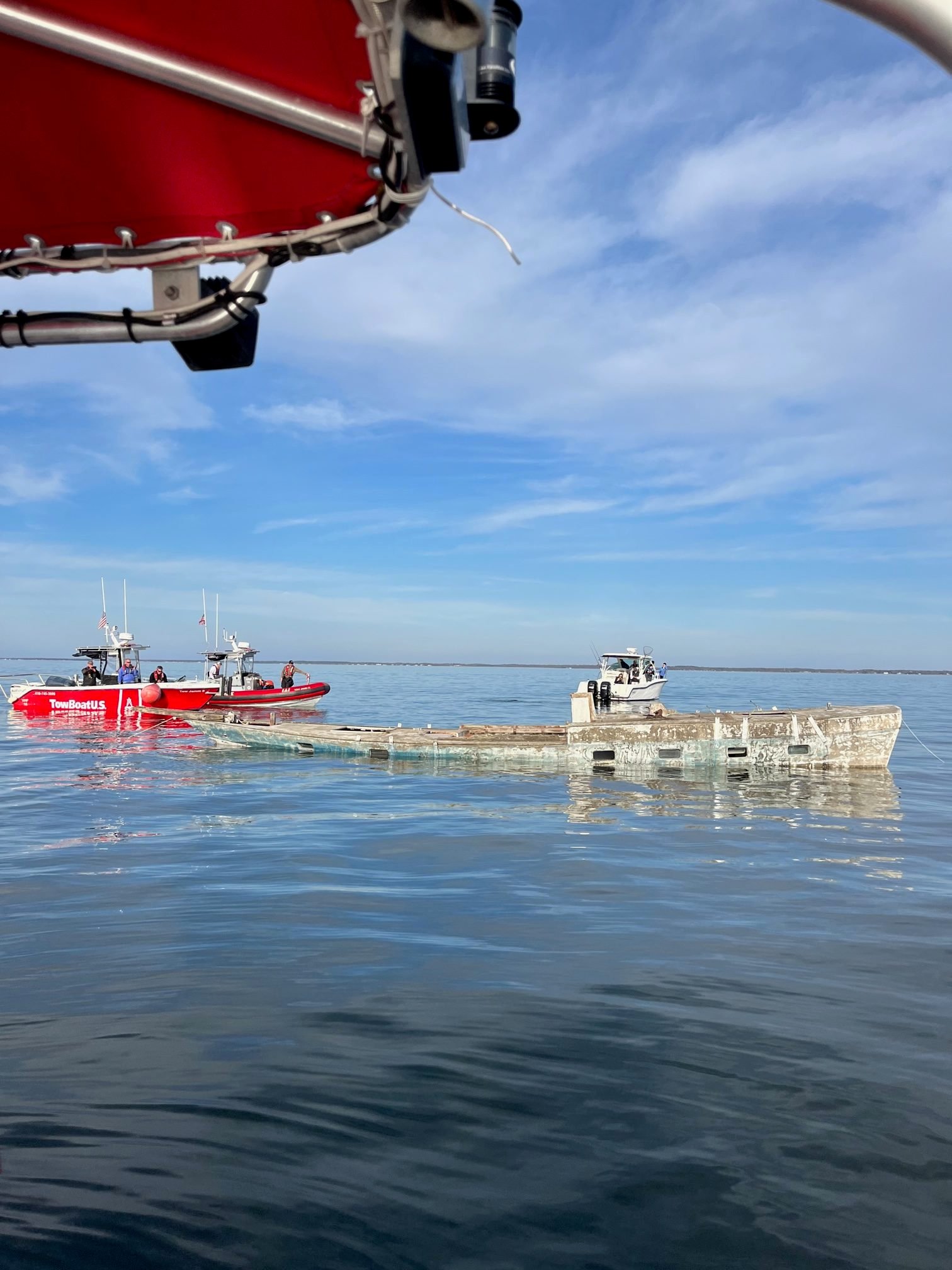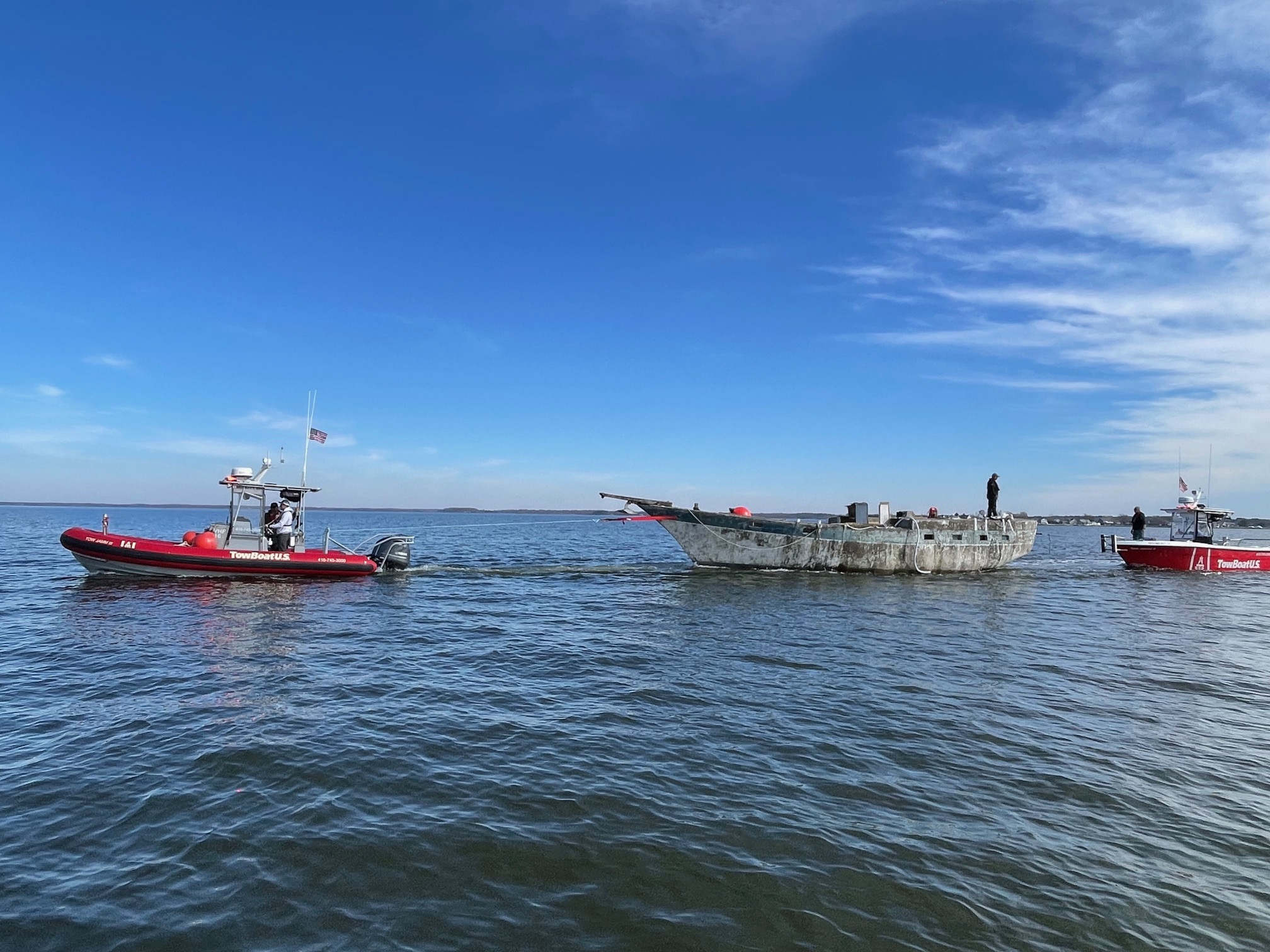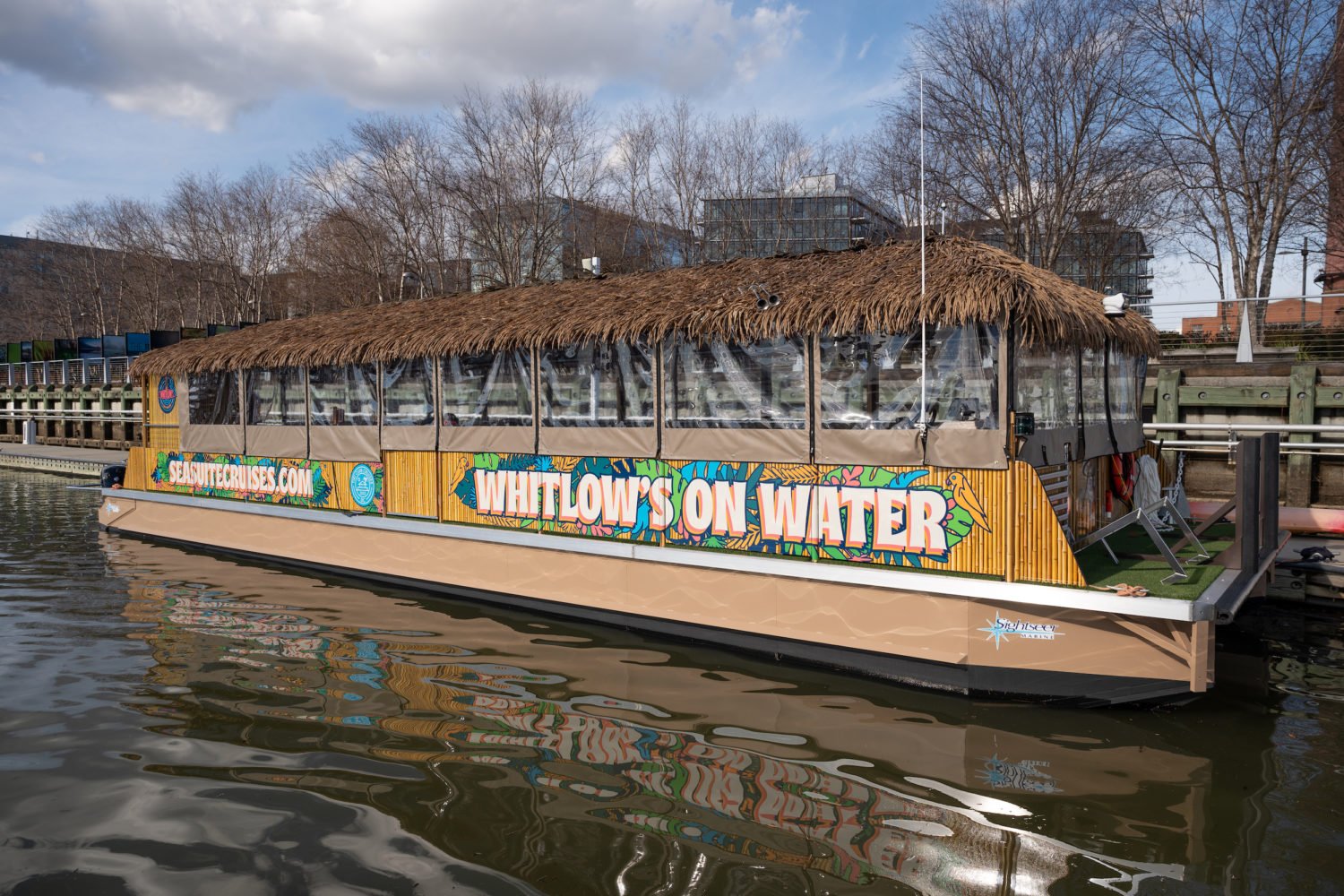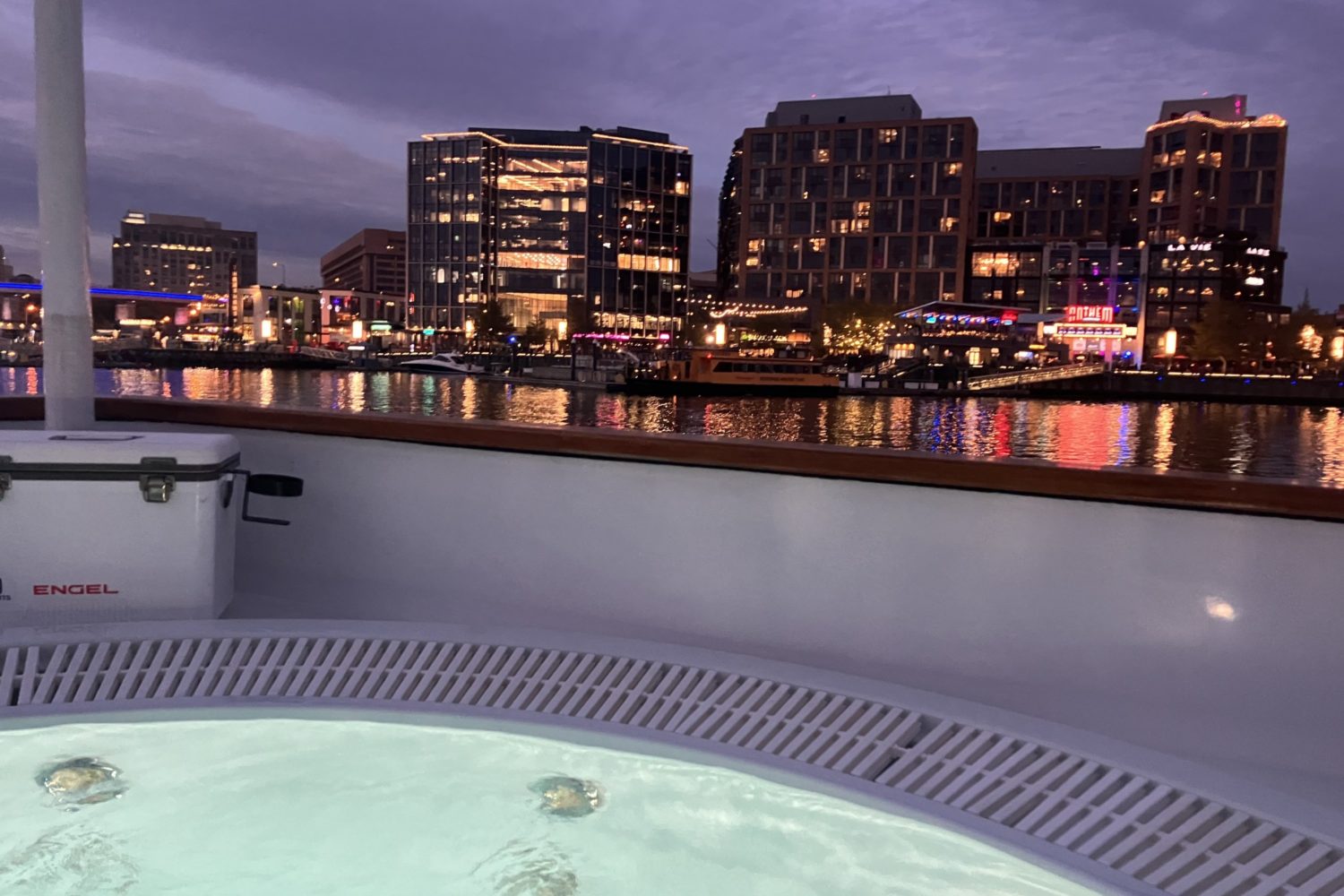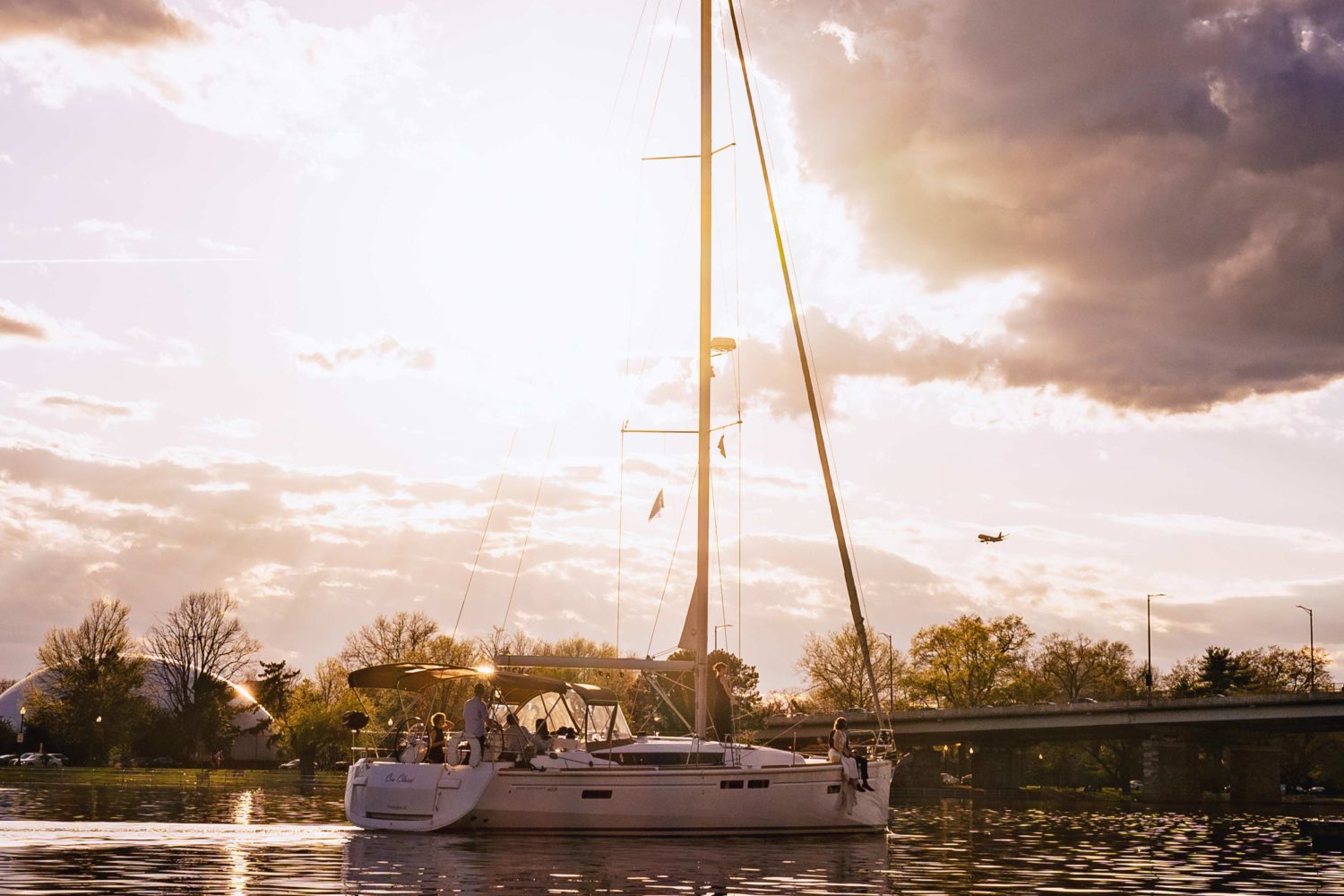In February, Maryland’s Department of Natural Resources partnered with TowBoatUS to sink a 52-foot cement boat in the Chesapeake Bay just north of Kent Island’s Love Point. We had some questions about that—here’s what we found out.
No, the DNR’s sinking of boats is not a regular thing.
Turns out, it was just this one. It was sunk to become a new reef as part of the DNR’s artificial reef program, a decades-old initiative designed to ensure the vibrancy of the Chesapeake Bay’s fisheries. Coordinator Mike Malpezzi says that while there are surely some other boats sitting at the bottom of the bay, this is the first one they’ve intentionally put there (unless you count steel barges as boats—they’ve sunk some of those, too.)
The program’s sinking of other stuff is totally normal.
But it’s mostly chunks of concrete rubble from demolished bridges. Tons of concrete, in fact, rest at the bay’s bottom, because it’s similar to natural reef. Some sites also have railroad pieces. Two reef sites have tires.
There are currently 25 reef sites in the Chesapeake Bay.
The sites, which range in size from two acres to more than 3,000 acres, are scattered from Pooles Island down to the Tangier Sound, just north of the Virginia border. Some date back to the ’60s—and the DNR regularly adds to sites as materials come available, says Malpezzi. The boat was added to the 50-acre Love Point site, which was close to where the boat was being launched, and deep enough (about 30 feet) to accommodate it while maintaining the required 15 feet of clearance from reef to waterline.
The cement boat will become a working reef fast.
In fact, fish were probably scoping it out by the time the crew got out of there. A habitat—providing food and shelter—will form by the end of the summer, Malpezzi says, and within a year or two, it’ll be considered mature.
Lots of marine life will use it.
The boat will become home to tunicates, barnacles, mussels, anemones, mud crabs, algae, and other “reef critters,” as Malpezzi calls them. Some of the reefs grow oysters, but those are apparently hit-or-miss at this particular location. Eventually, divers will go down and send DNR underwater footage of how it’s all going.
Even if you have an old boat you want to get rid of, you should definitely not sink it.
Malpezzi says he gets asked this all the time, but preparing a recreational boat for this kind of deployment is actually a huge hassle. For starters, he says that you have to drain every drop of hydraulic fluid, and you essentially have to steam-clean the interior and strip it down. That can cost thousands of dollars—something he says almost no one looking to ditch a boat wants to spend. Plus, the fiberglass that most recreational boats are made of breaks apart over time, and the shape of the hulls makes them more prone to getting caught and dragged off the site in extreme weather. As a general rule, the program doesn’t accept donations of boats for this purpose, despite the near-weekly offers they receive. This cement one was an exception because of its material, good condition, and larger size. Also, the marina that had it already had the resources to prep it, and the connection with TowBoatUS to get it out to the site—two otherwise costly factors that Malpezzi says are an impediment to accepting donations.
